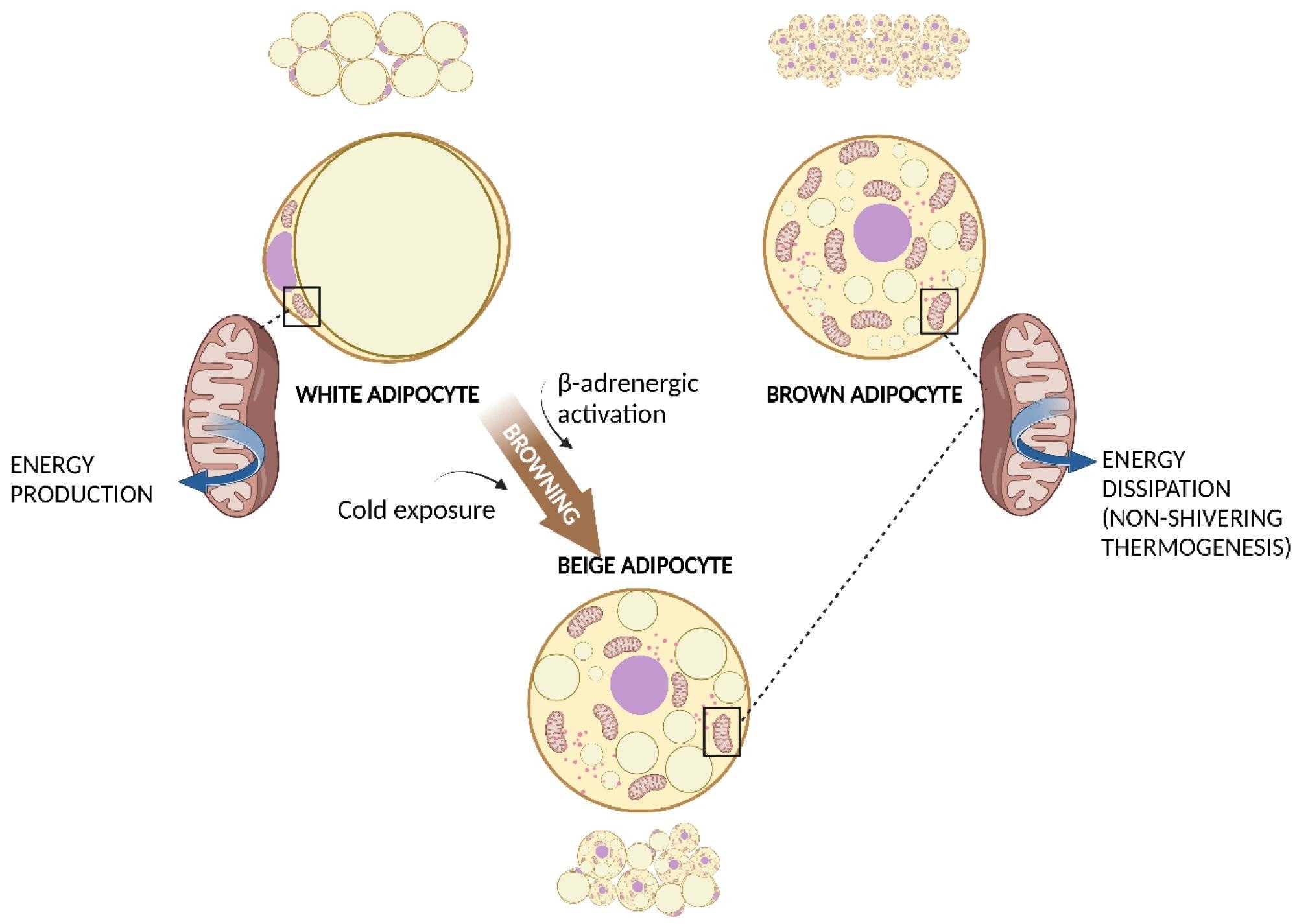In a recent review published in the journal Nutrients, researchers explored how the dysregulation of gut microbiota in obesity impacts adipose tissue (AT) metabolism through direct and indirect effects on the mitochondria within white (WAT) and brown adipose tissue (BAT).
 Study: The Crosstalk between Gut Microbiota and White Adipose Tissue Mitochondria in Obesity. Image Credit: KateStudio / Shutterstock
Study: The Crosstalk between Gut Microbiota and White Adipose Tissue Mitochondria in Obesity. Image Credit: KateStudio / Shutterstock
Background
Obesity, affecting 13% of the global population as of 2016, has reached epidemic levels, challenging both developed and developing nations. By 2039, it is projected that more than 30% of adults in Europe and even more in the United States of America (USA) will be obese. This condition arises from a complex interplay of genetic, lifestyle, and environmental factors, leading to excessive energy storage in AT. This storage exceeds the tissue's capacity for oxygenation, causing inflammation, insulin resistance, and increased cardiometabolic and cancer risks. Despite extensive study, the role of cellular and mitochondrial metabolism in obesity, especially the influence of gut microbiota on AT, needs clearer understanding. Identifying how gut microbiota affects AT mitochondria could lay the groundwork for novel obesity treatments, highlighting the need for further research.
 WAT, BAT, and WAT browning. White adipocyte has one large droplet in the centre of the cell that compresses nucleus and mitochondria at one pole. Brown adipocyte has multiple small lipid droplets and more mitochondria, spread out between the droplets. Beige adipocyte has intermediate characteristics. Cold exposure and β-adrenergic activation determine the browning of WAT. Both brown and beige mitochondria are involved in non-shivering thermogenesis. Abbreviations: BAT, brown adipose tissue; WAT, white adipose tissue.
WAT, BAT, and WAT browning. White adipocyte has one large droplet in the centre of the cell that compresses nucleus and mitochondria at one pole. Brown adipocyte has multiple small lipid droplets and more mitochondria, spread out between the droplets. Beige adipocyte has intermediate characteristics. Cold exposure and β-adrenergic activation determine the browning of WAT. Both brown and beige mitochondria are involved in non-shivering thermogenesis. Abbreviations: BAT, brown adipose tissue; WAT, white adipose tissue.
AT: An active endocrine organ
AT has transcended its traditional view as a mere energy reservoir and insulator and is now recognized as an active endocrine organ instrumental in metabolic regulation. This shift is attributed to its secretion of hormones like leptin and adiponectin and a variety of cytokines termed adipokines, marking its profound impact on metabolism. Within this tissue, adipocytes and other cell types, such as pre-adipocytes and immune cells, form a complex cellular environment underlying its multifaceted functions.
Diverse functions of WAT and BAT
AT, classified into WAT for energy storage and BAT for thermogenic energy expenditure, plays vital roles in metabolic health. WAT's large cells store fat, contributing to mechanical protection and metabolic regulation, while BAT's smaller, lipid-rich cells generate heat through non-shivering thermogenesis, offering potential in treating metabolic disorders.
The metabolic and endocrine role of AT
Ectopic fat deposition and the activation of ATs highlight the complexity of their roles in health and disease. While ectopic fats are associated with metabolic complications, the process of "browning" in WAT, wherein cells adopt BAT-like characteristics, offers therapeutic prospects for metabolic diseases. The endocrine functions of WAT further elucidate its role in energy and metabolic homeostasis, with adipokines like leptin and adiponectin playing critical roles. BAT's contribution to energy expenditure through non-shivering thermogenesis represents a fundamental aspect of metabolic health, distinguishing the unique contributions of WAT and BAT to the body's energy balance and metabolic regulation.
Mitochondrial function in AT
Mitochondria play a critical role in energy metabolism within both WAT and BAT, driving adenosine triphosphate (ATP) production through nutrient oxidation and regulating lipid metabolism. In WAT, they support lipid synthesis and breakdown, influencing adipocyte differentiation and metabolic health. Dysfunctional mitochondria in WAT are linked to metabolic diseases due to impaired regulation of adipokines and fatty acid oxidation. Conversely, BAT mitochondria facilitate non-shivering thermogenesis via uncoupling protein-1 (UCP-1), showcasing their essential role in energy expenditure. This distinct mitochondrial function in BAT versus WAT underscores their significance in metabolic regulation and the potential for therapeutic targets in obesity and related conditions.
Mitochondrial dysfunction and obesity: A close connection
Obesity's impact on mitochondrial metabolism in AT, particularly in WAT and BAT, underscores a critical aspect of its pathophysiology. Mitochondrial dysfunction, characterized by altered bioenergetics and impaired lipid and glucose metabolism, plays an important role in intensifying obesity-related metabolic complications. Studies have revealed significant mitochondrial alterations in obesity, including diminished expression of mitochondrial proteins, reduced mitochondrial deoxyribonucleic acid (mtDNA) copy numbers, and decreased activity of oxidative phosphorylation complexes. These changes not only contribute to inefficient energy utilization and storage but also foster a shift towards adipocyte hypertrophy, further promoting inflammation and insulin resistance. The compromised mitochondrial function in WAT affects fatty acid oxidation and adipocyte differentiation, while in BAT, it impairs thermogenic efficiency, potentially shifting its metabolism towards a WAT-like phenotype. This connection between mitochondrial dysfunction and obesity highlights the urgent need for therapeutic strategies aimed at restoring mitochondrial health, offering a promising avenue for obesity management and the reduction of its associated metabolic disorders.
The role of gut microbiota in obesity and AT mitochondrial function
The interplay between gut microbiota and AT mitochondria significantly influences obesity management and metabolic health. The diverse gut ecosystem plays a fundamental role in metabolic processes, impacting lipid and glucose metabolism through the production of microbial metabolites like short-chain fatty acids (SCFAs). These metabolites affect mitochondrial function in ATs, modifying fatty acid oxidation and adipocyte differentiation, which are critical in obesity progression. Dysbiosis, characterized by an imbalance in gut microbial composition, has been linked to obesity-related metabolic impairments, suggesting that modulating gut microbiota could offer therapeutic avenues for improving mitochondrial function and combating obesity. This highlights the necessity for continued exploration into the gut microbiota- AT mitochondria axis to develop targeted interventions for obesity and its associated metabolic disorders.
Journal reference:
- Colangeli L, Escobar Marcillo DI, Simonelli V, Iorio E, Rinaldi T, Sbraccia P, Fortini P, Guglielmi V. The Crosstalk between Gut Microbiota and White Adipose Tissue Mitochondria in Obesity. Nutrients. (2023). DOI - 10.3390/nu15071723, https://www.mdpi.com/2072-6643/15/7/1723